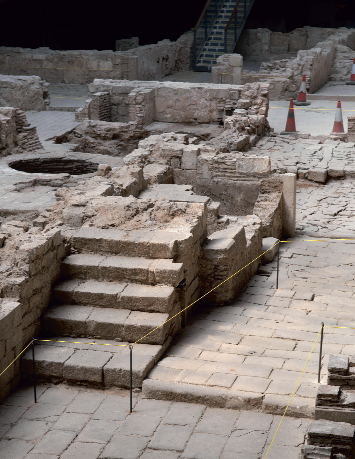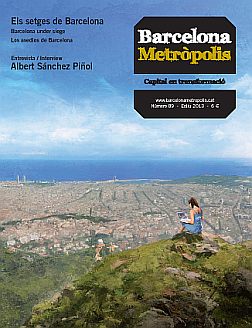Three hundred years after the defeat, El Born’s history lesson will help us critically deal with the past and educate free citizens for a future free country.

© Dani Codina
El Born offers a permanent display and archaeological site with thousands of finds, models and videos giving visitors some idea of the enormous quality of life of Barcelona society in 1700. In the image, the site during the final phase of the conditioning process.
One very rarely has the opportunity to float, rebuild and rethink sunken worlds. Through the efforts of many, El Born Centre Cultural opens to a world of excitement, epic tales and creation coinciding with the beginning of the 1714 Tercentenary. The epic sensations stirred by walking the streets where General Villarroel commanded the last counterattack on 11 September and advanced to face the Bourbon troops before he fell wounded; the thrill of discovering a neighbourhood and a city full of light, life, leisure and trade; a dynamic and open neighbourhood and city that the Dutch consuls called home, close to the string maker who added the finishing touches to violas that were exported all over Europe.
This whole world collapsed during the Bourbon repression that followed Catalonia’s defeat. Between the city’s ruins and the huge fortress, the Citadel, erected to watch over and enforce submission among those who remained, there lay an empty space, the esplanade where Antoni Rovira i Trias and Josep Fontserè built a magnificent market between 1874 and 1876. Its particular building form allowed the ruins to survive underneath it.
El Born is first and foremost a permanent exhibition and an archaeological site. Thanks to the models, videos and the thousands of artefacts found, visitors will realise, as Albert Garcia Espuche said, that “the cliché of Catalan decadence in the sixteenth and seventeenth centuries” dies here and that in 1700 Barcelona’s society enjoyed a high quality of life. El Born is a unique opportunity to slip in through the back door of history and rebuild a world through its private stories.
The second part of El Born’s discourse is the depiction of the events of 1714. Today, almost three hundred years later, the spirit of those times returns with a compelling and absorbing force; we must try to understand it and interpret it. However, in order to begin, we must first remember. The etymology of the term – which is not only Greek, but also Hebrew – zakhor, “you will remember”, means “you will continue to tell”. Remembering is no sterile exercise in nostalgia; quite the contrary, it is a reason to feel challenged and keep moving forward.
Training the free citizens of a free country of the future
Once the commemorations are all over, we must make sure that we do not forget the vital and human aspects of a people who felt free and wanted to be free. It is the only way that the exercise of remembering does not become puerile and barren, but rather creative and transformative, and that is exactly what the exhibition of the Siege of Barcelona sets out to do. The educational programmes are its most important feature: the history lesson of El Born would be of little use if it did not help us to develop new knowledge, critically examine our past and form free citizens for a future liberated country.
Yet El Born Centre Cultural wants to be something more: a reference place for culture in Catalonia and the Catalan Countries, a meeting point for agents from different fields, particularly those in which Catalan language and history play a fundamental role. This is the El Born that we want: a facility where we can help to build the collective imagery of a powerful, modern, open, universal culture that remains true to its national identity.
One of the spaces will be used for an ambitious programme of cultural activities and will host concerts, dancing, small-scale theatre productions, lectures, seminars and more, always seeking to prioritise the innovative and the experimental. We will resurrect old and legendary institutions, such as the Acadèmia dels Desconfiats [The Academy of the Distrustful], and fascinating redoubts of Barcelona’s irreverent and festive side, such as the Societat del Born [El Born Society]. Furthermore, we will do our best to make it a small city for children, where they will enjoy a vivid, fun and exciting first contact with their country’s history.




Pingback: El Born, punt de trobada | Núvol